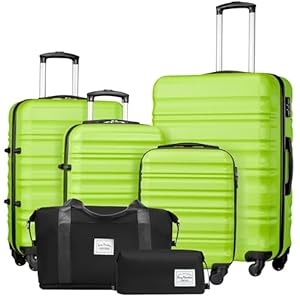
The dataset can seen and downloaded from here.
Steps to observe
To carry out an Exploratory Knowledge Evaluation (EDA) on the dataset, we are going to observe these essential steps:
1. Knowledge Inspection
2. Knowledge Cleansing
3. Knowledge Visualisation
4. Speculation Testing
Step 1: Knowledge Inspection
Knowledge inspection is step one in any evaluation, whether or not the objective is to construct fashions or carry out an EDA, as in our case.
The goal is to look at totally different points of the information to establish any points that want consideration in the course of the cleansing course of.
Consider it as a check-up achieved by docs earlier than making a analysis or prescription.
Importing Essential Libraries
For this evaluation, we’ll primarily use `pandas` for knowledge manipulation, `numpy` for numerical operations, and `matplotlib` together with `seaborn` for knowledge visualisation.

Loading the Knowledge
Utilizing the pandas library, you’ll be able to simply load knowledge with capabilities like read_csv, read_excel, and so on., relying on the file format. Since our dataset is in CSV format, we’ll use the read_csv operate to load it.
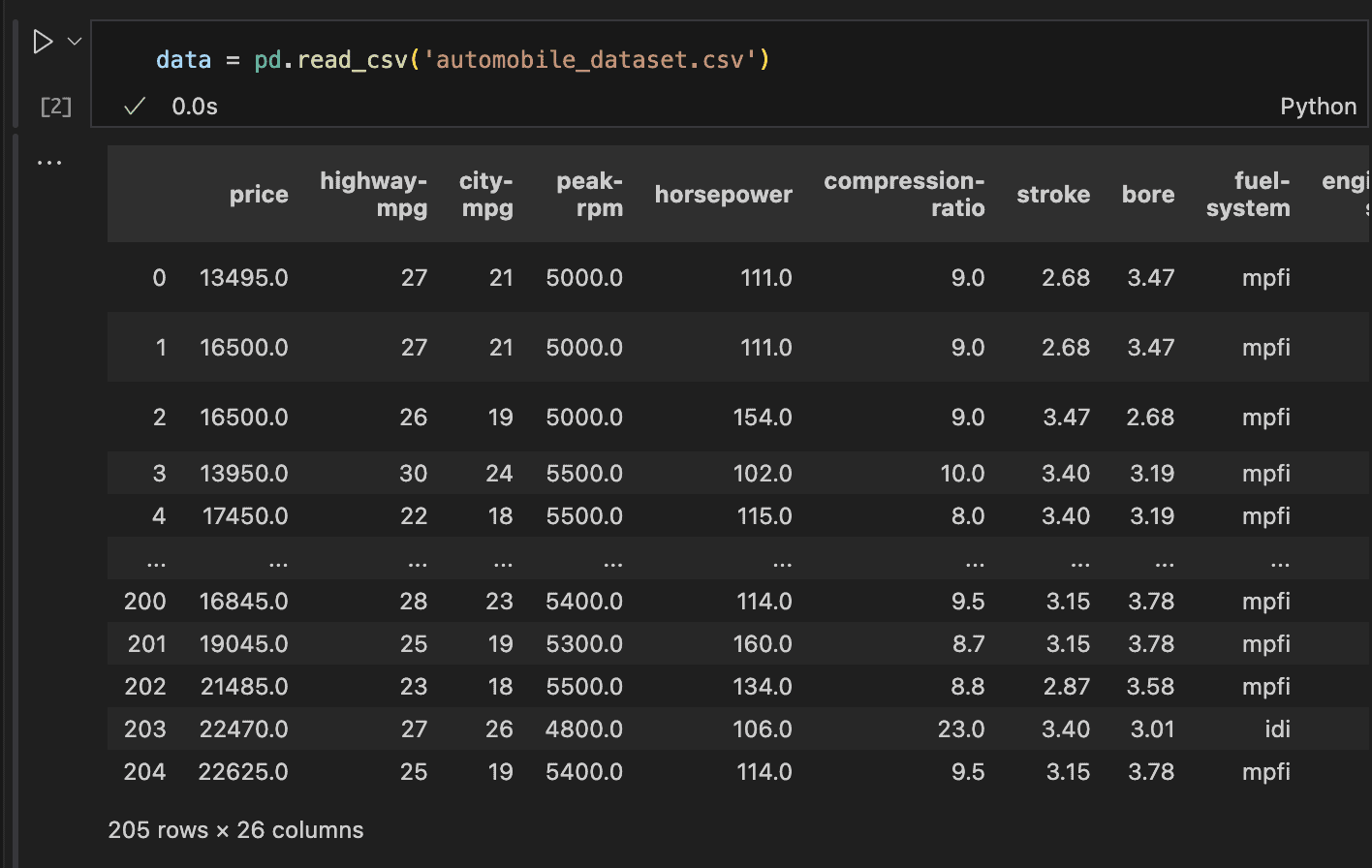
Within the code above, we might see the variety of rows and columns, however there’s extra we have to examine.
What number of columns have lacking values? How can we view all 26 columns and perceive what they signify?
Accessing the columns
To get a complete overview of the dataset, together with particulars like the information varieties, variety of non-null entries, and column names, we are able to use the data() technique in pandas.
This technique gives every little thing we have to know concerning the dataset at a look.
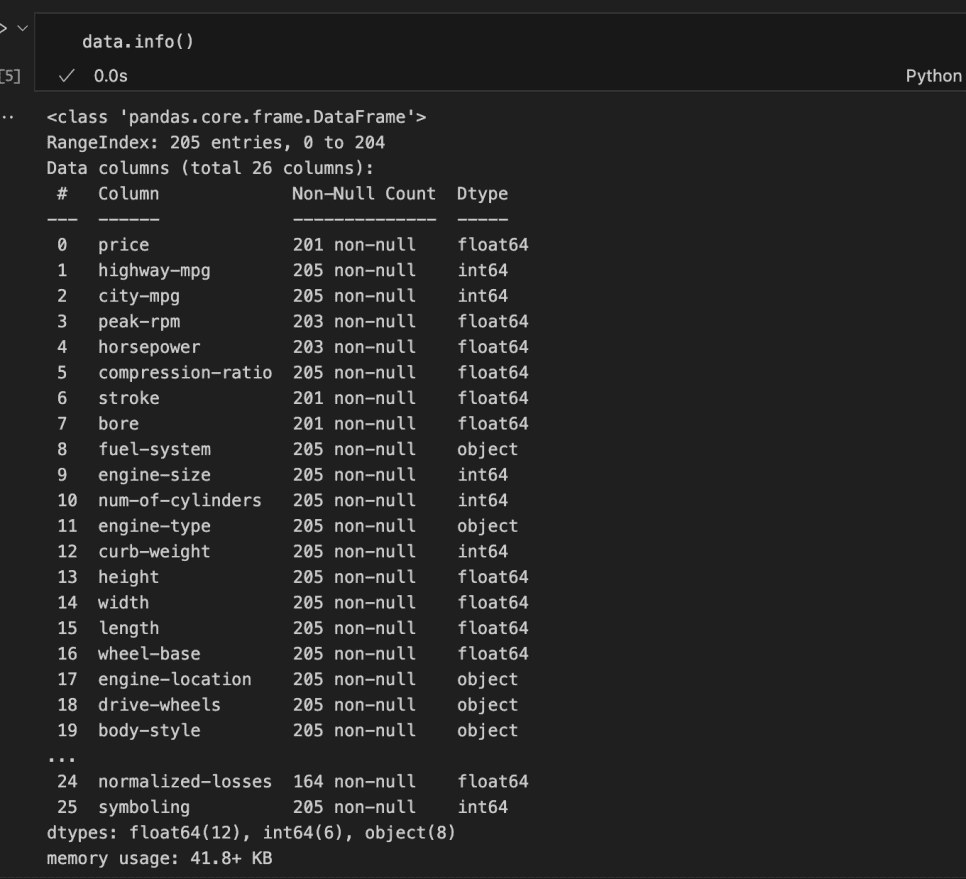
Within the code above, we might partially entry the dataset’s options. Nevertheless, not all columns have been listed.
From these displayed, we are able to establish columns with lacking values, the information forms of every column, and the reminiscence utilization.
It may be noticed that 12 columns are of float knowledge kind, 6 are integers, and eight are strings/objects. Which means that 18 columns are numerical, whereas 8 are categorical or ordinal.
Coping with Null values
Coping with null values is crucial and can’t be prevented. For instance, out of the 205 complete rows, the worth column has solely 201 non-null entries, horsepower and peak-rpm have 203, and stroke and bore have 201, amongst others.
To get a clearer image, we are able to use the isna() technique adopted by sum() to return the variety of null values in every column.
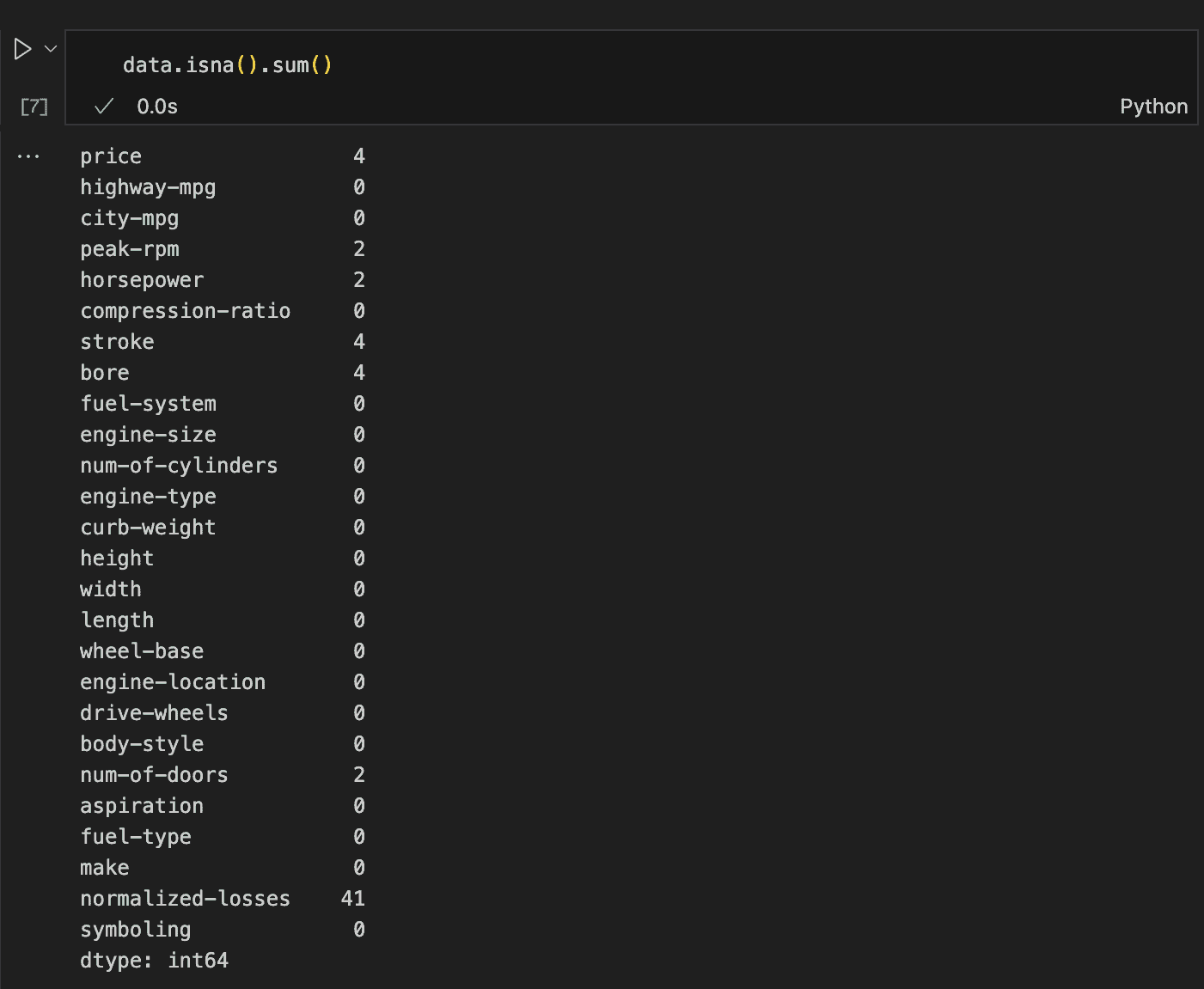
This technique reveals every little thing we have to find out about lacking values, exhibiting that we have to tackle seven columns in complete.
Duplicate Rows
One other essential side to examine is the presence of duplicate rows. Fortunately, Pandas makes this course of easy.
Through the use of the duplicated() technique adopted by sum(), we are able to shortly decide the whole variety of duplicate rows within the dataset.

For the reason that return worth is 0, we are able to confidently say that there are not any duplicate rows within the dataset.
Statistical Illustration of Knowledge
To hold out this evaluation, the describe() technique in Pandas gives a straightforward approach to view key statistical values for all numeric options. See the code and consequence under for an instance.
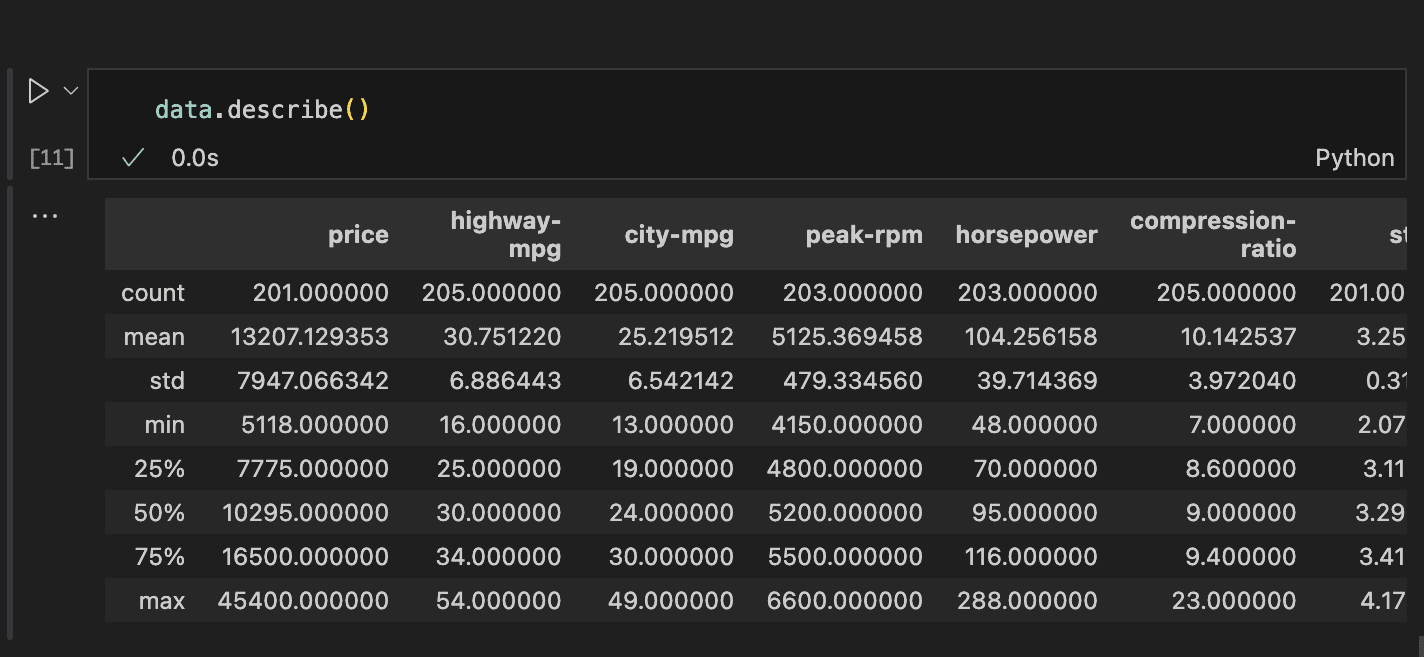
Details about the rely, imply, customary deviation, min, 25-percentile, 50-percentile (median), 75-percentile, and most worth for every column could be simply accessed.
This info reveals that the majority options may need distributions near regular and therefore has no outliers. That may be verified utilizing an histogram and field plot.
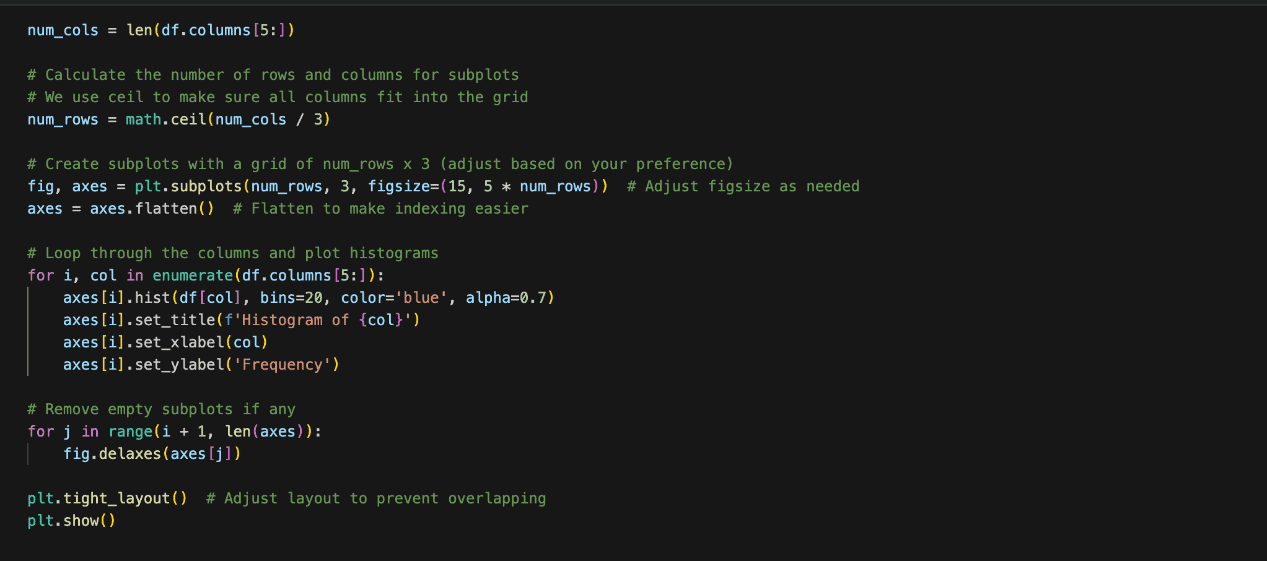
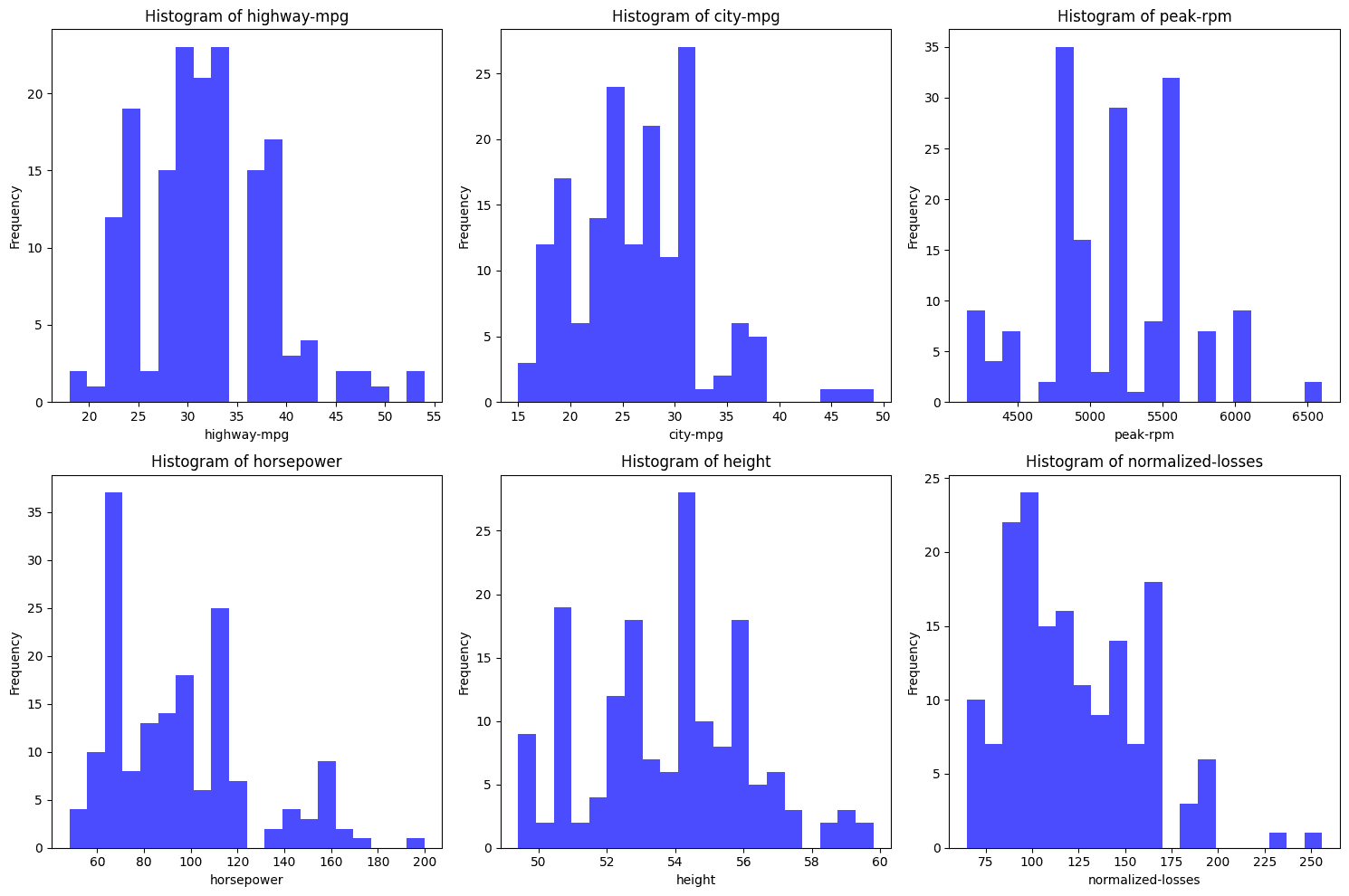
From the histograms above, none of them appear to completely observe a traditional distribution. Right here’s a fast evaluation of every:
- highway-mpg: This distribution seems bimodal (two peaks) somewhat than usually distributed which is bell formed. The bimodality suggests two distinct group which may very well be a gaggle of quick automobiles and fewer quick automobiles.
- city-mpg: Much like highway-mpg, this distribution just isn’t usually distributed. It additionally seems bimodal with two peaks.
- peak-rpm: This histogram is sort of irregular with a couple of outstanding peaks, suggesting that the information is skewed and never usually distributed.
- horsepower: The distribution is skewed to the correct, that means there are extra knowledge factors with decrease horsepower, and the tail extends in the direction of greater horsepower values. This isn’t a traditional distribution.
- peak: The peak histogram is the closest to a traditional distribution. It isn’t completely regular however it’s fairly shut.
- normalized-losses: This distribution reveals a proper skew, the place most knowledge factors are focused on the decrease aspect and a protracted tail stretches in the direction of greater values. That is additionally not usually distributed.
Regular distribution have numerous traits which incorporates equal imply and median, a bell formed distribution which additionally means they’re symmentric and subsequently has no skew and eventually, no outliers.
It’s a good method to confirm totally.
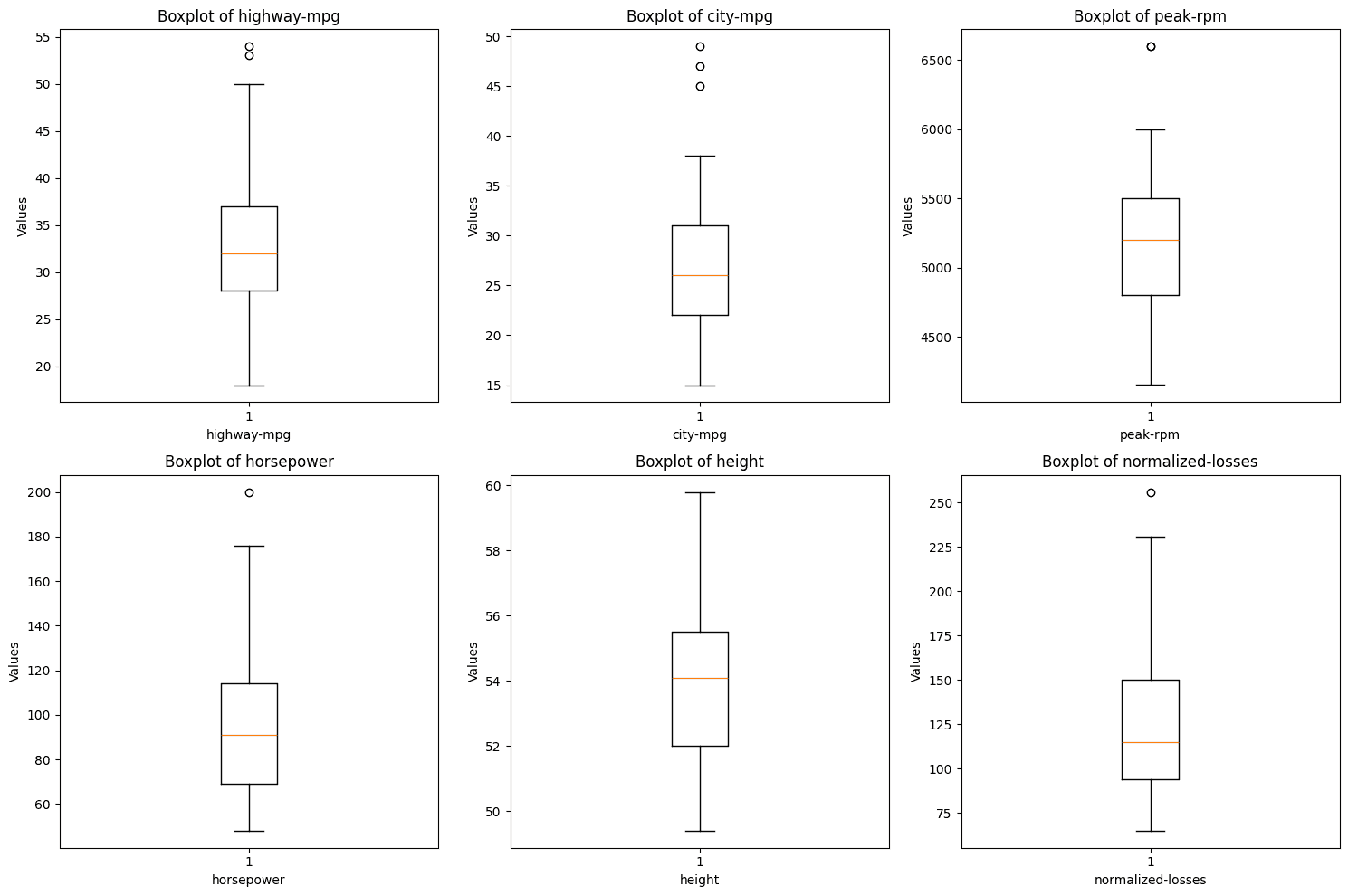
The boxplots above reveals that a few of the variables encompass outliers. The factors exterior of the whiskers of the plots are outliers and although they aren’t many, they must be handled.
From the perusing step, we all know we’ve got to take care of lacking knowledge, and outliers.
Step 2: Cleansing the information
Knowledge cleansing includes getting ready the information in a manner that makes it appropriate for evaluation.
Sorting Out Lacking Rows
From the earlier step, we all know there are lacking values within the worth, num-of-doors, peak-rpm, horsepower, stroke, bore, and normalized-losses columns.
Whereas we are able to change these with the imply or median based mostly on statistical reasoning, it’s essential to additionally take into account the context.
As an example, if a characteristic is restricted to a sure producer, it may be extra acceptable to fill in lacking values with what’s frequent for that producer.
First, let’s assess the rows with lacking horsepower values to determine the perfect method for filling them in.

– Horsepower and peak-rpm
There are two rows the place each horsepower and peak-rpm are lacking. A more in-depth look reveals that these rows belong to the identical automobile model, and notably, these are the one two data for that producer within the dataset.
This means that there are not any historic values to reference, making it inappropriate to easily use the typical or median of the whole column.
It is because a automobile’s horsepower is influenced by numerous components, together with the producer.
In a real-world state of affairs, with inadequate knowledge and an incapability to afford shedding extra rows, the best choice can be to analysis the automobile model.
The dataset incorporates particulars just like the variety of doorways and the physique fashion (e.g., wagon or hatchback), which might assist establish the particular mannequin or the same one to estimate the lacking horsepower.
Nevertheless, on this case, we are going to drop these rows. As well as, it’s value noting that the normalised-losses—which signify the historic losses incurred by an insurance coverage firm for a particular automobile, after being normalised—are additionally lacking.
Since normalised losses are essential on this evaluation, we are going to exclude rows with out this knowledge. If this have been a modeling downside, we would take into account coaching a mannequin to foretell these losses, after which use the mannequin to estimate the lacking values.
– Stroke and bore options
Subsequent, let’s talk about the stroke and bore options. The bore refers back to the diameter of the engine’s cylinders, measured in inches. Bigger bores enable for bigger valves and elevated airflow.
The stroke, alternatively, is the space the piston travels contained in the cylinder, additionally measured in inches. Longer strokes usually present extra torque.
There could also be a correlation between these options and the normalised losses, making them probably essential.
Upon inspecting the rows with lacking stroke and bore, we discover that 4 rows are lacking each options.
These rows correspond to automobiles from the Mazda model. We should always look into historic data for Mazda to find out the standard values for stroke and bore of their autos.
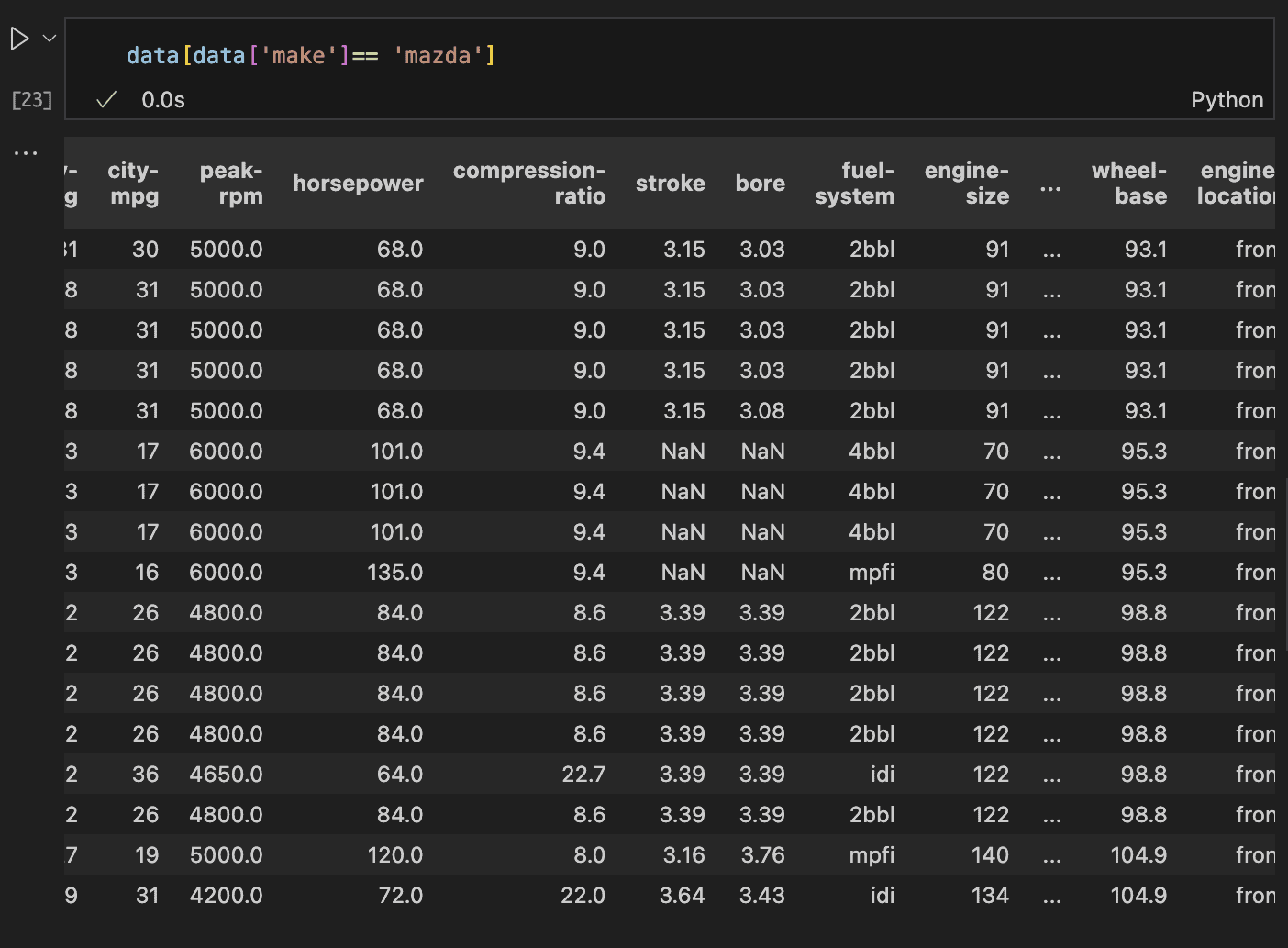
The code and consequence above confirms that historic knowledge is obtainable. Whereas the perfect method can be to conduct analysis, a viable various is to interchange the lacking values with the typical values from comparable data.
This ensures the alternative values keep inside a practical vary. To proceed, we first calculate the typical stroke and bore values for Mazda autos within the dataset.
As soon as we’ve got these averages, we are able to change the lacking values accordingly. This may be achieved by grouping the information by the automobile producer after which computing the typical for the stroke and bore columns.
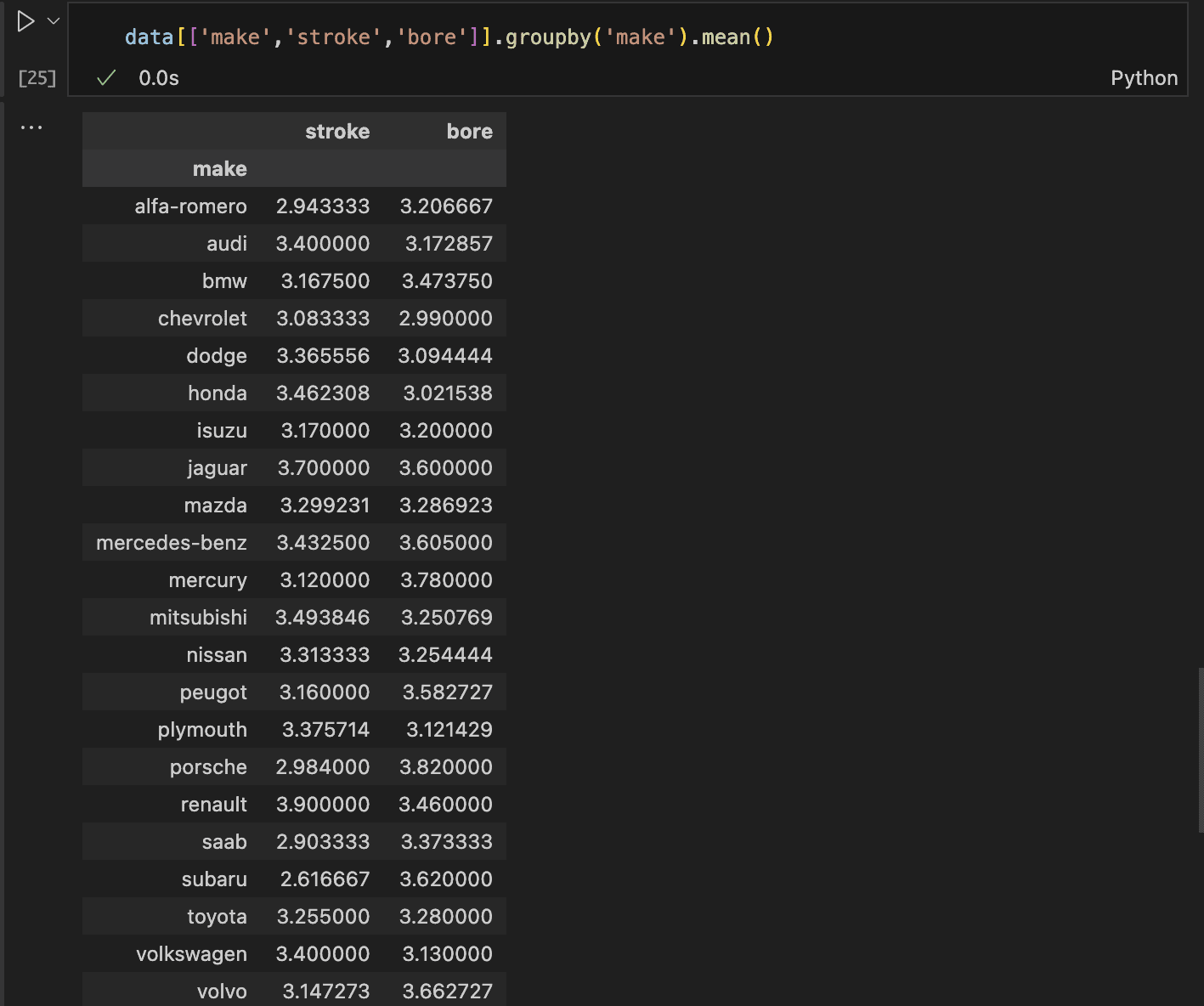
The imply values for Mazda’s stroke and bore are roughly 3.3, rounded to the closest decimal.
We will change the lacking values (NaN) with these averages. We will apply the identical technique for the lacking costs.
First, we establish the rows with lacking costs, examine the automobile manufacturers, after which determine the perfect plan of action.
There are three totally different automobile manufacturers with lacking costs, which even have their normalised losses lacking. Since our evaluation focuses on normalised losses, we’ll drop rows with lacking normalised losses for this evaluation.
Dealing with outliers
Relating to outliers, there are numerous approaches to dealing with them relying on the dataset’s supposed use. When constructing fashions, one possibility is to make use of algorithms which might be sturdy to outliers.
If the outliers are on account of errors, they are often changed with the imply or eliminated altogether.
On this case, nonetheless, we are going to depart them as they’re. This choice relies on their shortage throughout variables, which permits us to retain all situations within the knowledge.
The outliers should not faulty; in reality, having extra knowledge would allow us to seize a broader vary of their situations.
With that determined, let’s proceed with the information cleansing:
- First, take away all rows with lacking normalised losses. This may even deal with rows with lacking costs and horsepower.
- Then, fill within the imply stroke and bore values for Mazda solely.
- Lastly, print the sum of all remaining null values to substantiate the cleansing course of.
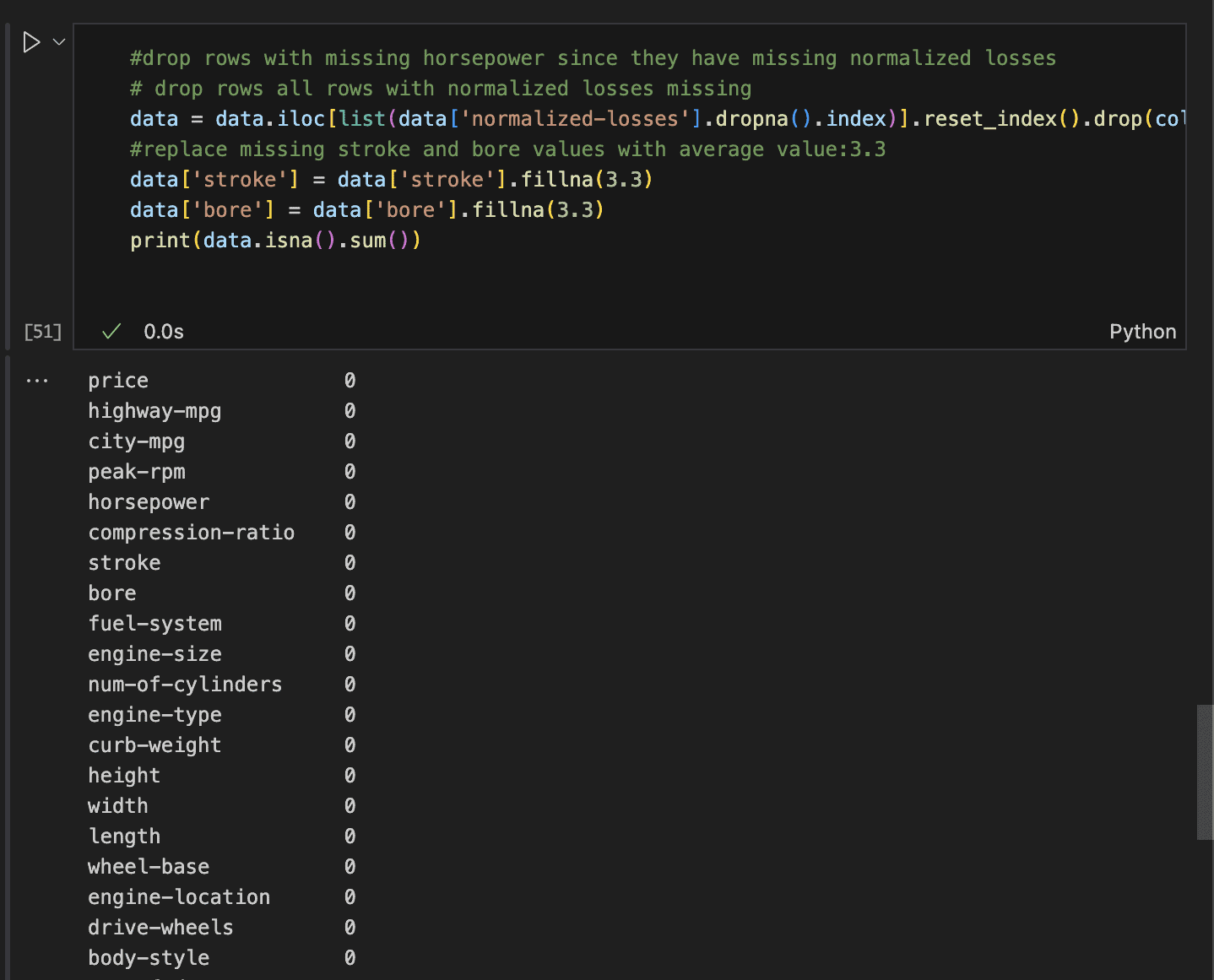
This leaves us with zero lacking values in every row.
Drop Pointless Columns
At this level, it’s essential to be clear concerning the focus of the evaluation and take away irrelevant columns.
On this case, the evaluation is centered on understanding the options that affect normalised losses.
With a complete of 26 columns, we must always drop these which might be unlikely to contribute to accidents or injury.
A simple method is to look at the correlation of the numeric options with normalised losses. This may be simply achieved utilizing the Corr technique.
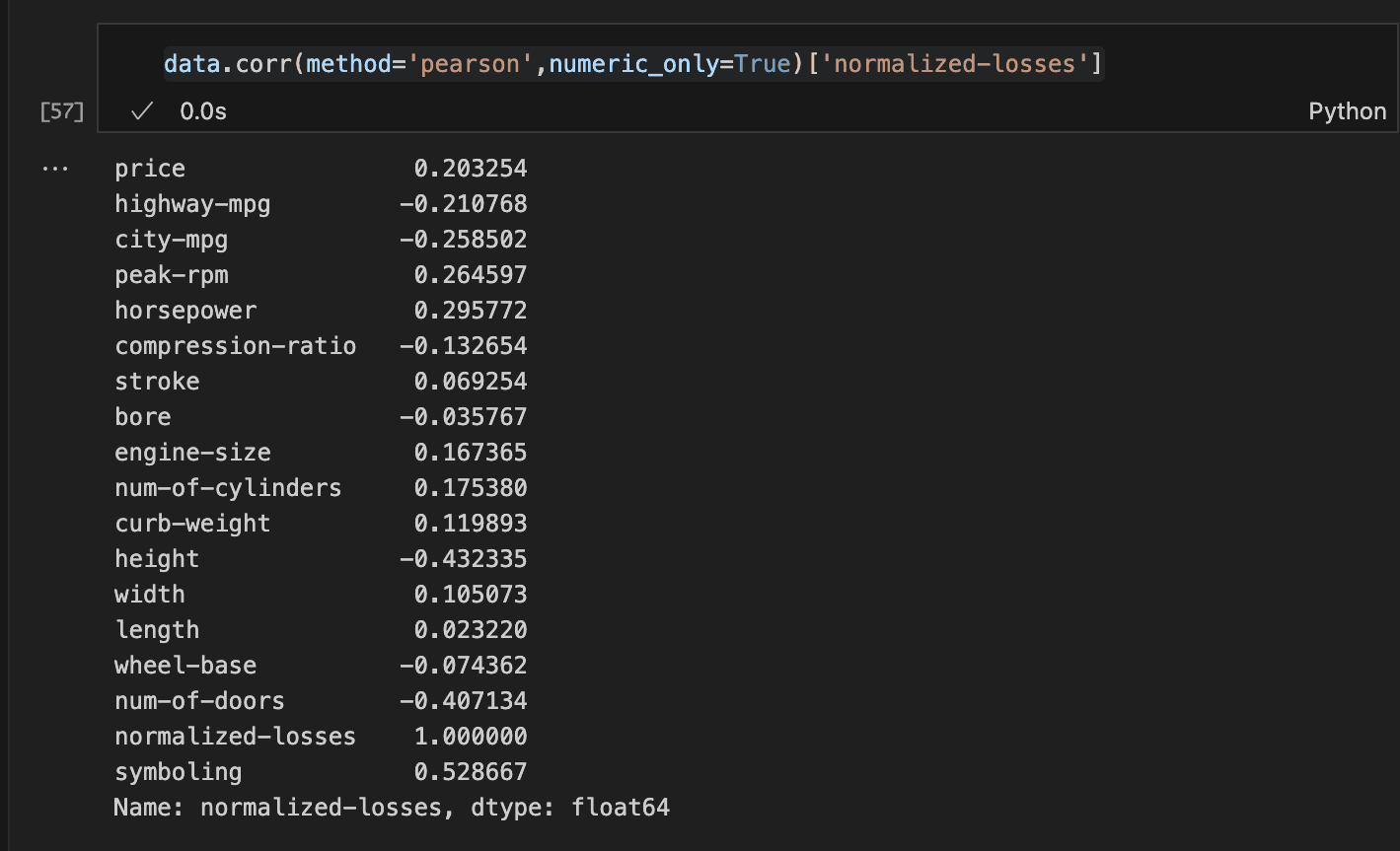
Step 3: Visualising the information
To successfully carry out knowledge visualisation, we are able to formulate key questions that want solutions:
Some examples could be:
- Does a sure physique kind,gas kind or aspiration result in elevated insurance coverage loss?
- What’s the relationship between chosen options and normalised losses?
To reply the query about physique kind, we are able to analyze the connection between physique kind and normalised losses. Right here’s how:
- Choose the body-type and normalised losses columns.
- Group the information by body-type and calculate the imply normalized losses for every group.
- Use Seaborn’s barplot to visualise the imply normalised losses by physique kind.
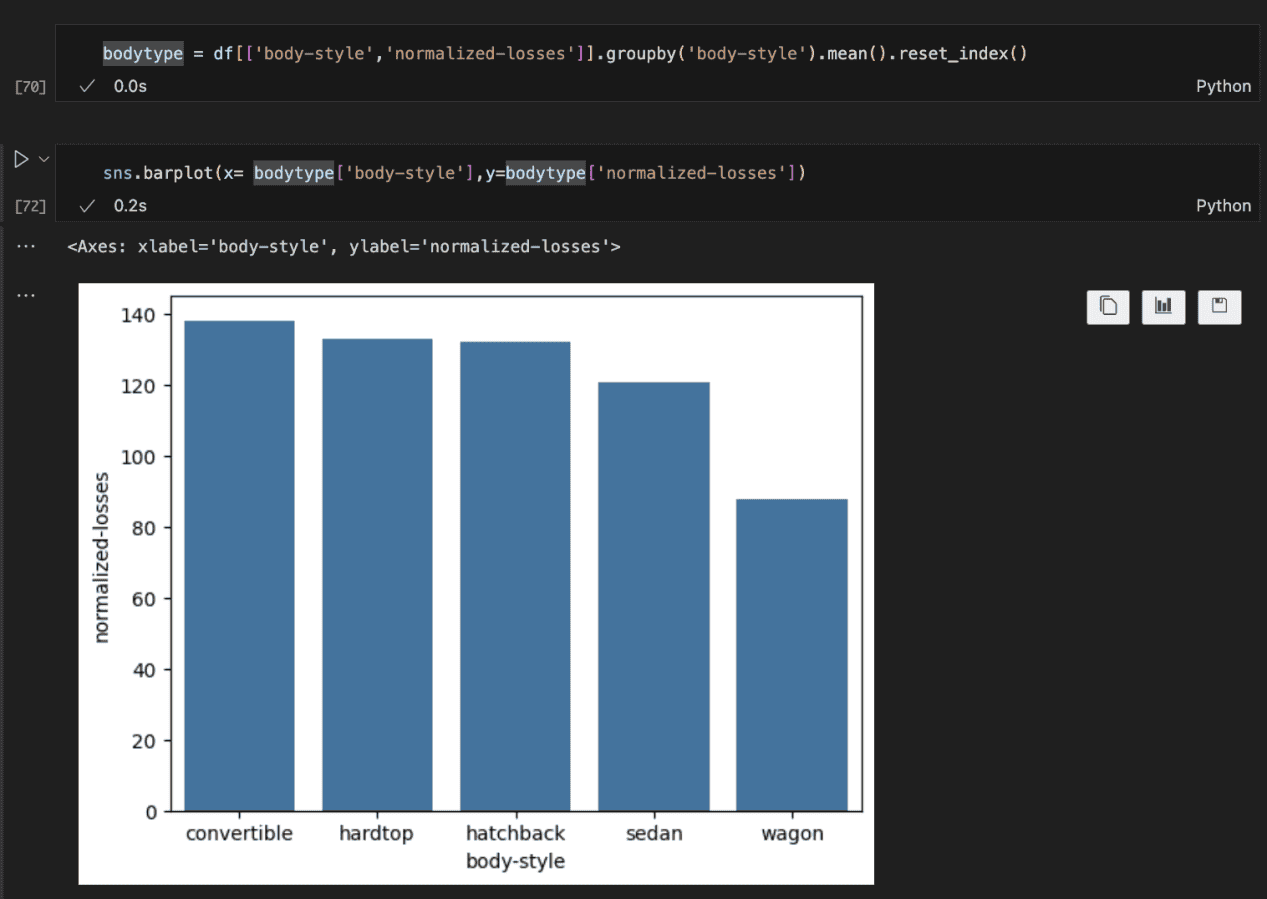
The plot above reveals that imply losses certainly fluctuate based mostly on physique kind. Convertibles have the very best common quantity paid for losses by insurance coverage corporations, whereas wagons have the bottom.
I think it is because of the truth that convertibles are typically sport automobiles and as such constructed for pace. This may result in extra accidents and extra causes to greater insurance coverage pay.
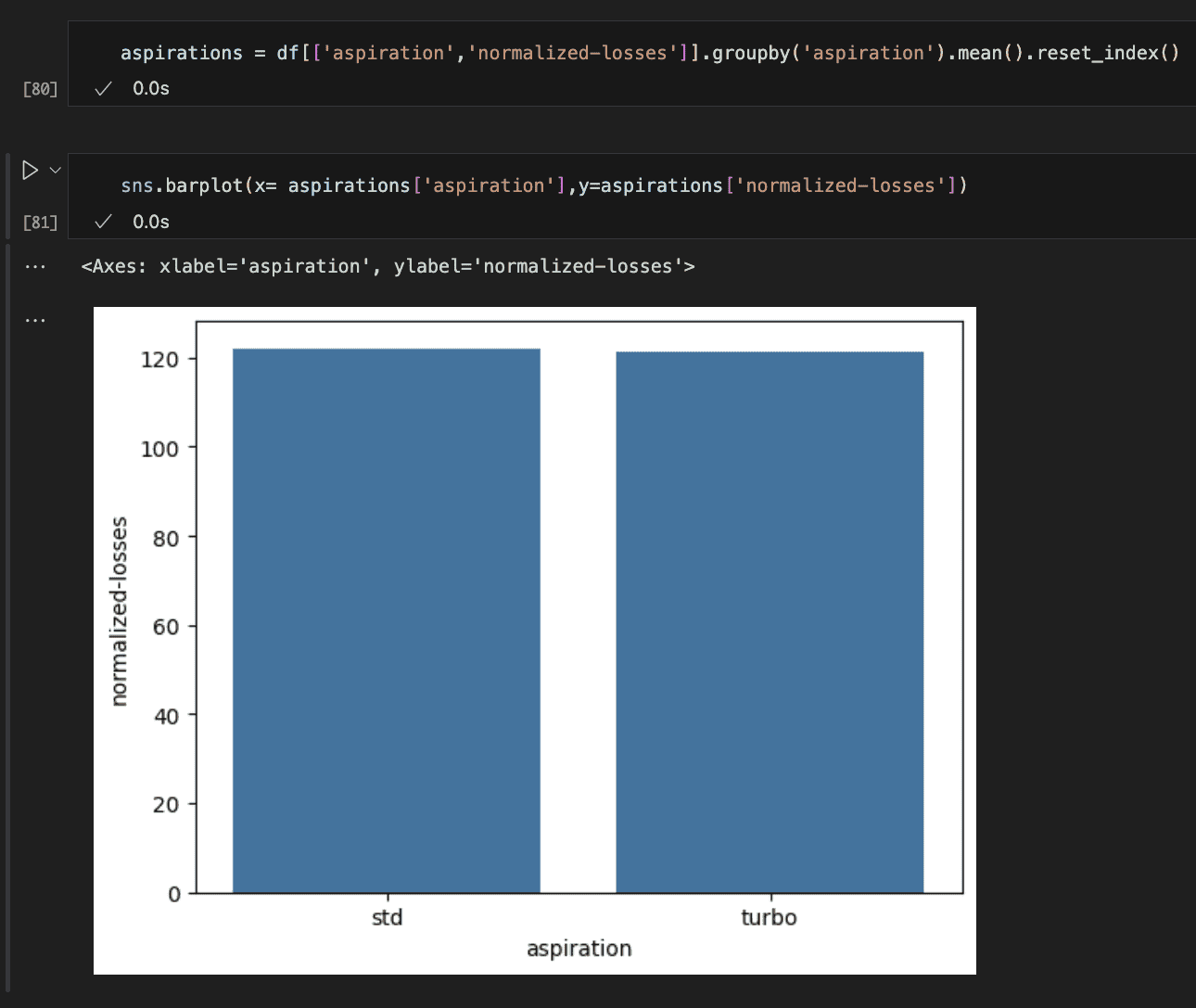
The image above reveals whether or not or not a automobile is customary (naturally supercharged) or as turbo has no impact on the losses. I discover this stunning.
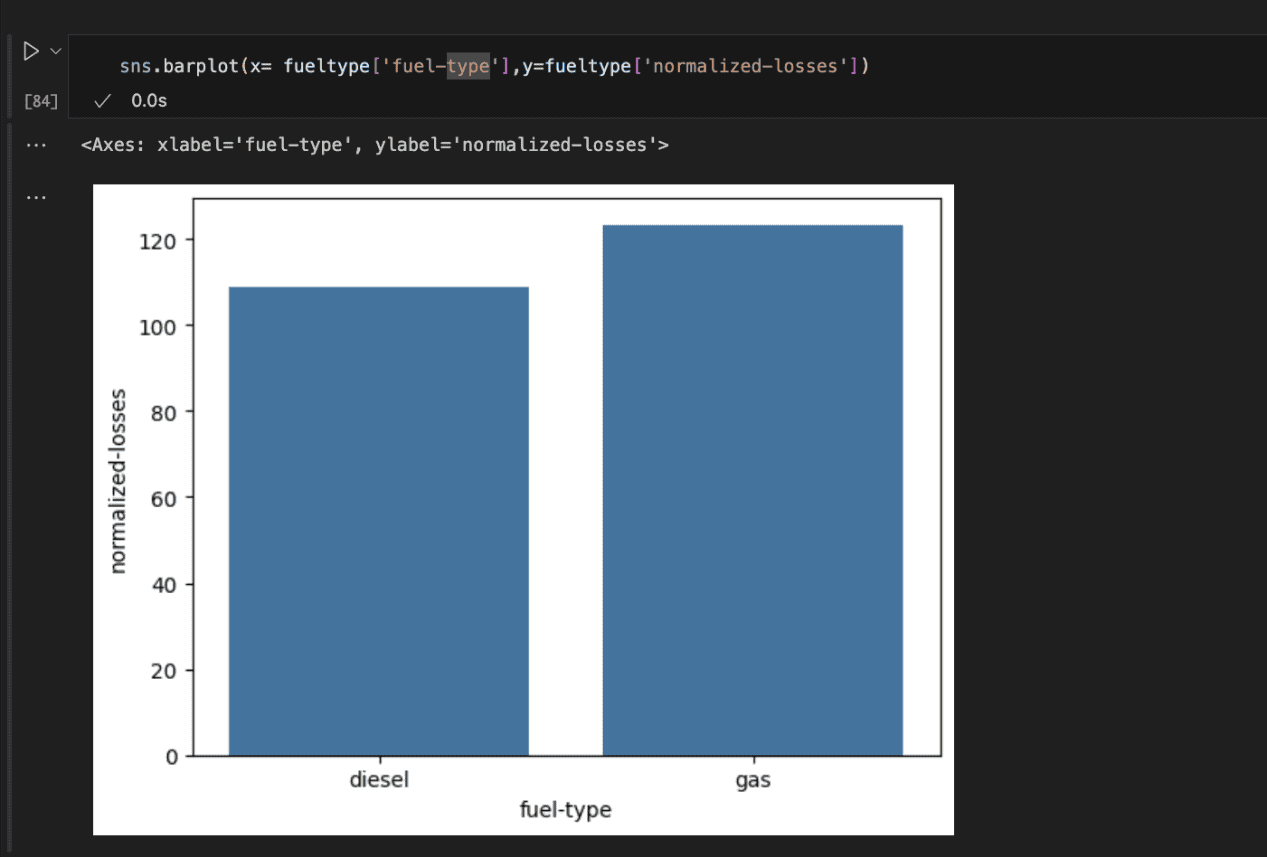
Checking the gas kind reveals that automobiles operating on fuel incur extra losses for insurance coverage corporations than diesel-powered autos.
This may very well be as a result of gas-powered automobiles usually present higher acceleration, main drivers to push them more durable and probably growing the chance of accidents.
The subsequent type of evaluation is to examine the connection between numerical options.
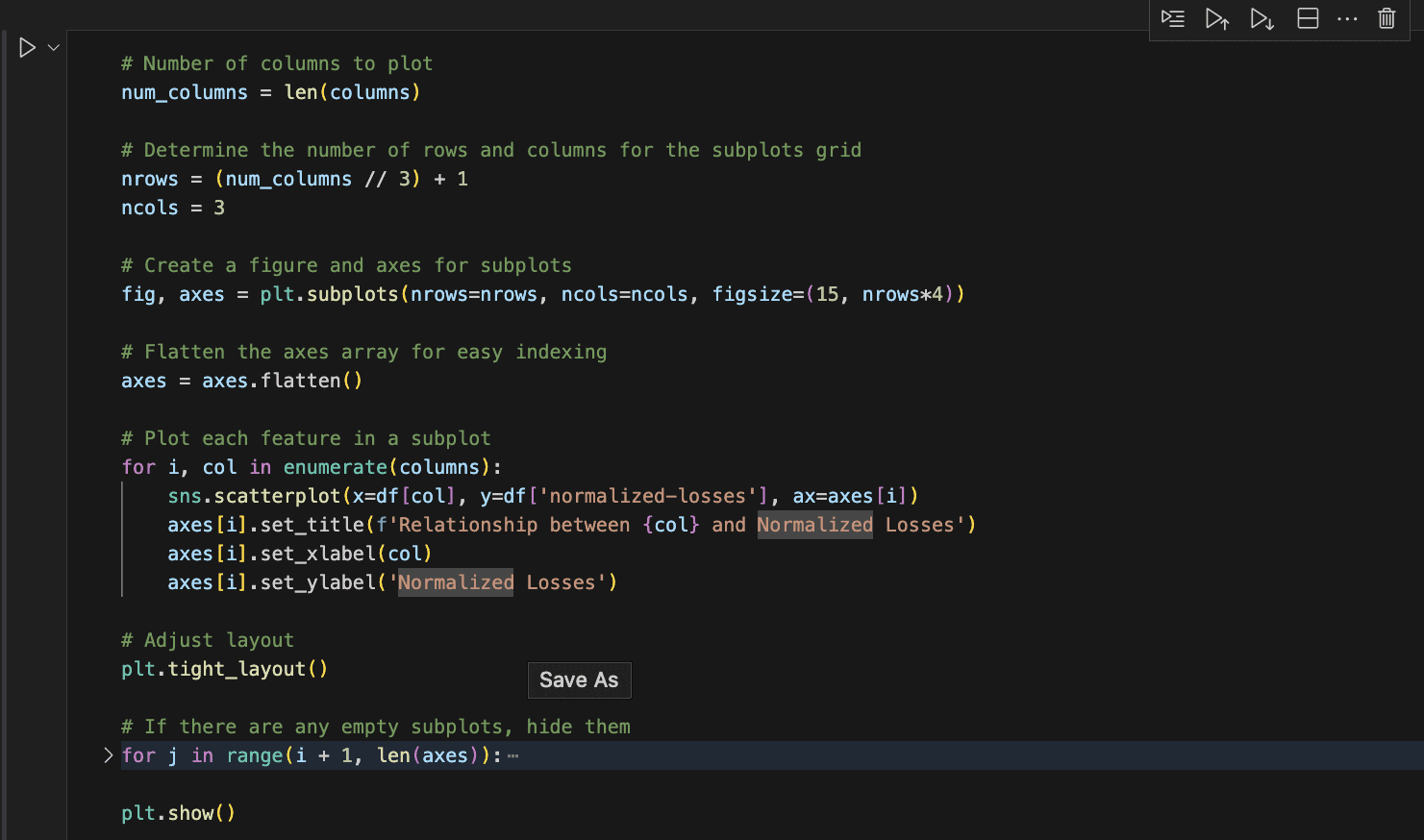
The subplots under present the connection between chosen options and normalised losses.
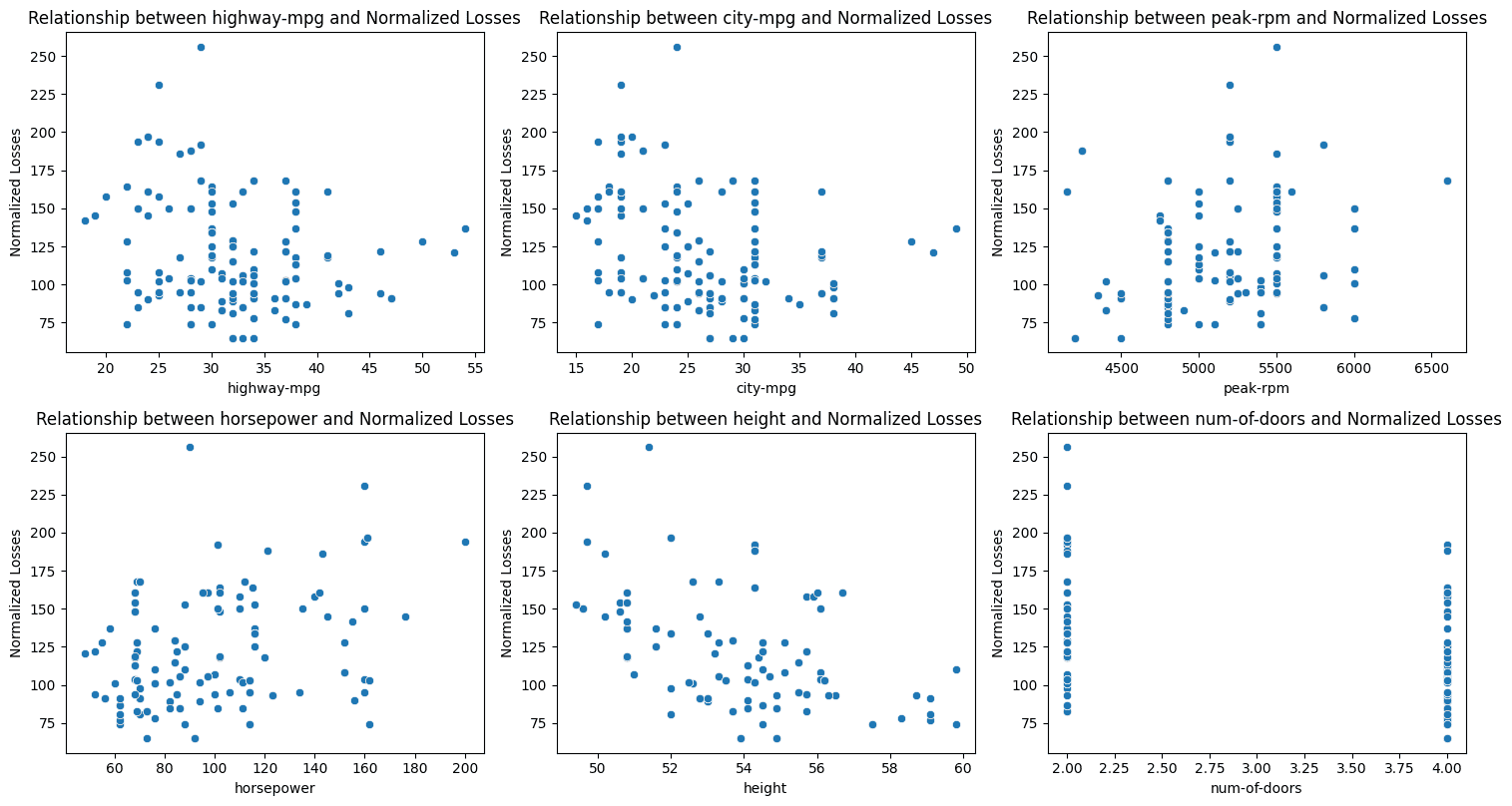
Key Takeaways:
- Gas Effectivity: There’s a slight constructive correlation between a automobile’s gas effectivity in each metropolis and freeway driving and the normalised losses.
- Engine Efficiency: The engine pace at which most horsepower is produced (peak RPM) reveals a slight constructive correlation with normalised losses. As well as, there may be a fair stronger constructive relationship between horsepower and losses. Greater horsepower usually results in quicker acceleration and better high speeds, which might enhance the chance of accidents and, consequently, extra injury.
- Automotive Peak: Taller automobiles are inclined to incur fewer losses. That is an instance of damaging correlation. It may be on account of higher visibility and enhanced crash safety provided by their taller roofs, notably in sure forms of collisions.
- Variety of Doorways: There’s a reasonable constructive correlation between the variety of doorways and normalized losses, with automobiles having fewer doorways (usually two-door automobiles) incurring extra losses. This may very well be as a result of many two-door automobiles are sports activities automobiles, which are sometimes pushed extra aggressively.
Step 4: Speculation Testing
Whereas visualisations can counsel potential constructive relationships, it’s essential to check the statistical significance of those relationships.
Are the options actually correlated, or is it simply on account of likelihood?
When performing significance assessments, a number of components have to be thought of. These embrace the kind of knowledge (e.g., numerical vs. categorical, numerical vs. numerical), the normality of the information, and the variances, as many statistical assessments depend on particular assumptions.
On this case, we’re evaluating our numerical variables with the normalised losses utilizing Spearman’s Rank Correlation because the knowledge distribution just isn’t regular.
Let’s outline our hypotheses:
Null Speculation (H₀): There is no such thing as a correlation between the 2 variables.
Different Speculation (H₁): There’s a correlation between the 2 variables.
We set the importance stage (alpha) at 0.05. If the p-value is lower than alpha, we reject the null speculation and conclude that there’s a important relationship.
Nevertheless, if the p-value is larger than alpha, we fail to reject the null speculation, that means no important correlation is discovered.
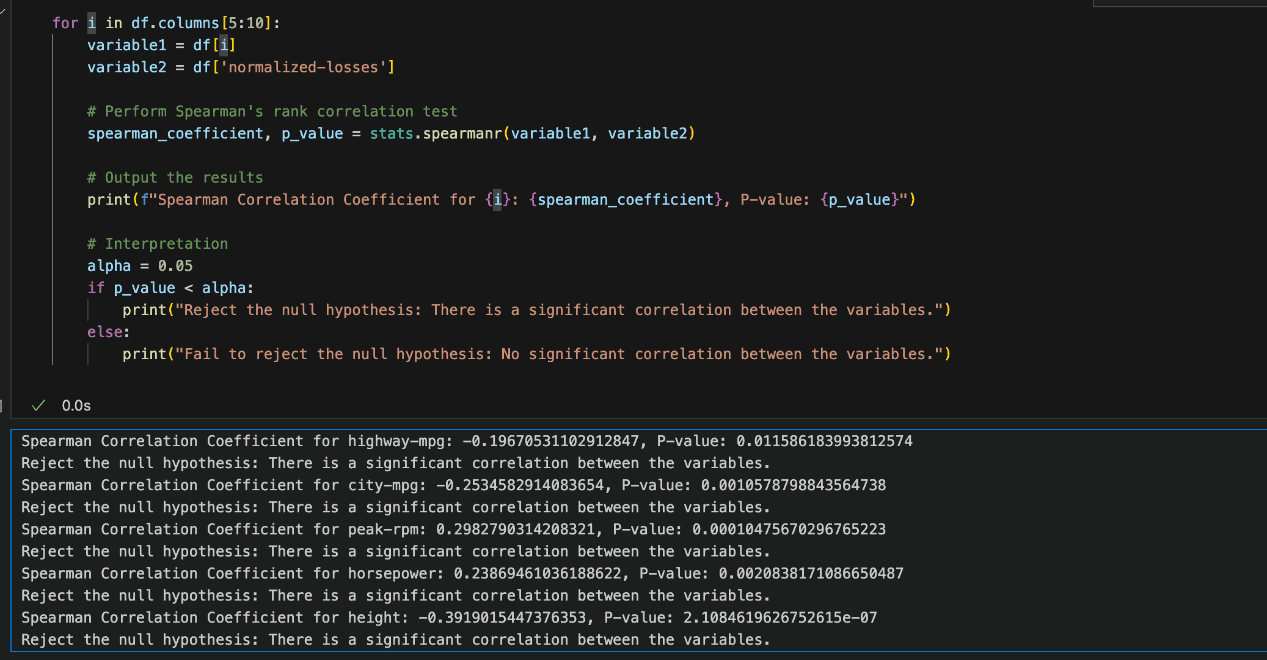
Based mostly on the picture above, the outcomes point out that our assumptions are statistically important, and for every variable, the null speculation is rejected.
Conclusion
From the evaluation, it’s evident that sure components associated to a automobile’s stability and acceleration capabilities usually result in elevated insurance coverage losses.
This complete evaluation lined numerous approaches to knowledge wrangling and visualisation, uncovering worthwhile insights.
These findings can support insurance coverage corporations in making extra knowledgeable selections, predicting potential losses related to particular automobile fashions, and adjusting their pricing methods accordingly.
Trending Merchandise

